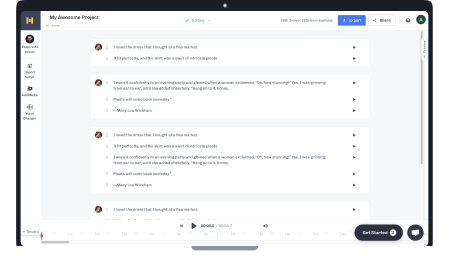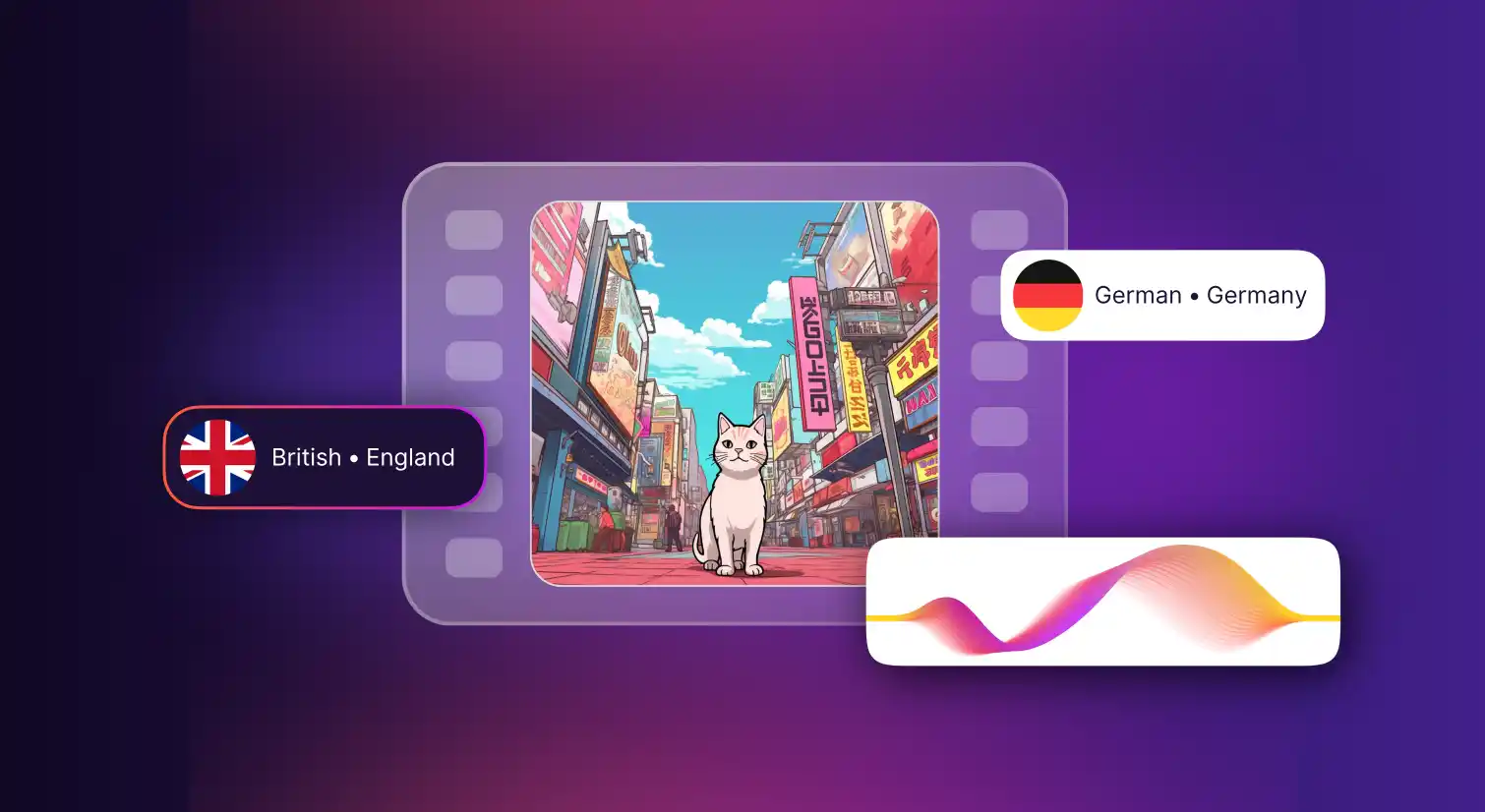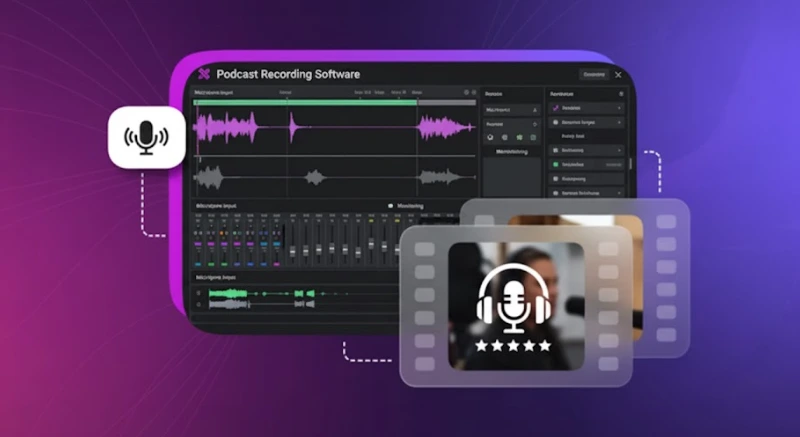What is Video Localization? [Ultimate Guide for 2026]
![What is Video Localization? [Ultimate Guide for 2026]](https://cdn.prod.website-files.com/675151245f2993547dbd5046/67e3f1bd92d14db34952e8d9_Video%20Localization%20Hero.webp)
Why Video Localization Is Essential for Global Growth?
Video localization is the process of adapting video content for different languages, cultures, and regions so it feels natural and relevant to local audiences. Unlike simple translation, video localization goes further by adjusting dialogue, subtitles, graphics, on-screen text, symbols, humor, and even audio tracks through dubbing or voiceover. The goal is to create a viewing experience that resonates with each target market as authentically as the original version.
Localised videos have proven to be a powerful tool in a content creator’s arsenal, potentially boosting viewer engagement and conversion rates. By tailoring content to meet each market’s cultural and linguistic preferences, creators and brands can forge stronger connections with international audiences globally, turning casual viewers into brand advocates and customers.
What is the Importance of Video Localization?
Video localization is important because it expands global reach, increases audience engagement and satisfaction, and improves brand perception by making content accessible and relatable to diverse cultural and linguistic groups.
Global Reach
Localizing videos makes content understandable to audiences who don't speak the original language, opening up previously inaccessible markets and potential customers. A study posted on LinkedIn reveals that video translation and localization can significantly increase brand loyalty and lead generation, opening doors to foreign markets that were previously inaccessible.
Improved Understanding
When viewers watch content in their native language, comprehension skyrockets. Localization services make sure that the message isn’t just heard but understood. This clarity can transform a casual viewer into an informed customer, as they are more likely to trust and engage with content that speaks their language, literally and culturally.
Increased Engagement
Providing content in a viewer's preferred language and cultural context creates are a goldmine. Videos in localised language create a deeper, more positive experience, leading to greater satisfaction and loyalty.
Significantly, these concrete figures support the fact that localization boosts website visits by 70% and increases conversion rates by 20% (as OneSky’s comprehensive blog localization statistics explain).
Competitive Advantage
In a crowded marketplace, video localization can be the differentiator that sets a brand apart. It’s a clear signal to the audience that a company values and understands its unique cultural perspective, which can be a decisive factor in the consumer’s decision-making process. This cultural competence can give businesses a competitive edge, making them the preferred choice.
Cultural Sensitivity
Cultural sensitivity is not just about avoiding blunders; it’s about building bridges. Localizing content shows respect for the audience’s local culture and customs, which can significantly enhance a brand’s reputation. It prevents misunderstandings that could otherwise tarnish a brand’s image and ensures that the target audience accepts and appreciates the content.
Key Statistics Highlighting the Impact of Localised Video
- According to India Watch Report 2019, 40% of video consumption comes from regional content.
- According to Harvard Business Review 2012, 72.1% of consumers spend most or all of their time on websites in their own language
- According to Castmagic, channels that produce content in local languages often see engagement rates 2-3 times higher.
What are the Various Techniques of Video Localization?
Video Content localization can be approached through various methods, each with its unique advantages and challenges. These techniques are essential for adapting video content to different languages and cultural contexts, ensuring the message is effectively communicated to the intended audience.
Subtitling
Subtitling is a fundamental method of video localization that displays translated text on screen while keeping the original audio. It’s cost-effective, accessible for hearing-impaired viewers, and easy to scale, though it requires audiences to split attention between reading and watching. For example, a startup may use subtitles for their product demo videos to reach international markets without a hefty investment.
Dubbing
Dubbing replaces the original dialogue with the recorded speech in the target audience’s native tongue, often employing voice actors to bring a script to life. Traditional dubbing has been a mainstay in international cinema, while AI dubbing is emerging as a tool for quicker and potentially more cost-effective localization.
With text to speech technology, AI-based dubbing is gaining even more momentum. The primary advantage of dubbing is a seamless viewing experience. Although it requires careful audio synchronization with the actors’ lip movements, dubbing is quite a popular and preferred method of video localization.
Transcription
Transcription involves converting spoken language within a video into written text, which can be translated for audio dubbing, subtitling, or voiceovers. It provides a precise script that improves translation accuracy, preserves the original message’s intent, and ensures effective video localization across multiple formats.
Voiceover
Voiceover in video localization overlays translated narration while the original audio remains faintly audible, often used in news and documentaries. Murf simplifies generating AI voices with customizable pitch, speed, and emphasis, delivering over 200 natural-sounding options in 20+ languages for authentic, culturally aligned voiceovers.
Reversioning and Transcreation
Reversioning (also called versioning) modifies entire scenes, storylines or visuals to resonate with a specific culture. A brand might swap actors, locations or product names to better fit the local context.
Transcreation goes beyond literal translation; it reimagines the message to capture the right tone, humor or emotional hook for a target culture. This method is ideal for high‑value marketing campaigns where preserving creative impact is crucial.
Steps to Implement a Successful Video Localization Strategy
Creating a successful video localization strategy involves a series of well-defined steps that ensure your content resonates with your intended audience, regardless of their language or cultural background. Here’s a streamlined guide to implementing your video localization strategy in an effective way:
Define Your Target Audience
Understanding your audience is the first step in any video localization strategy. A clearly defined target ensures your localised video resonates with the right viewers.
Identify Specific Regions or Languages
Pinpoint regions and languages that align with your business goals. Tailoring content to specific markets makes localisation video more effective.
Understand Cultural Nuances and Preferences
Adapting humor, idioms, and traditions helps create authentic experiences. Cultural alignment ensures the video feels natural rather than forced.
Select Localization Method
Choose between subtitles, dubbing, transcription, or voiceover depending on budget and audience needs. For example, voiceover for video games requires greater immersion compared to subtitled tutorials.
Prepare Source Content
High-quality video and audio make localization smoother and more accurate. Clean, adaptable visuals help when creating multiple localised versions.
Translation and Adaptation
Translation must capture both meaning and cultural tone. A well-adapted localisation video keeps the original message engaging and relevant.
Voice Talent and Audio Recording
Hiring voice talent or using AI ensures natural delivery and cultural fit. Skilled voice acting helps maintain emotional nuance in dubbing and voiceover.
Subtitling and Captioning
Subtitles should be concise, well-timed, and easy to read. Accurate captioning makes video localization accessible to wider audiences.
Distribution and Promotion
Share localized content across platforms your audience uses most. Optimizing titles, tags, and metadata improves reach and discoverability.
What are the Best Practices for Video Content Localization?
When localizing video content, adhering to best practices is essential for creating an engaging and culturally appropriate product for your target audience. Here are some key practices to follow:
Accurate Translation
To maintain the integrity of the original video, translations must be contextually accurate and culturally resonant. This involves a deep understanding of regional idioms, slang, and humor. For instance, a professional translator would know to adapt a baseball reference in an American video and a cricket reference for an Indian audience to preserve the meaning.
Lip-Sync Accuracy (Dubbing)
In dubbing, lip-syncing is an art as much as a technical skill. It requires voice actors to closely match the original actors speech patterns and mouth movements. For example, in a dialogue-heavy drama, even a slight mismatch can be distracting, so producers often use software to adjust the timing of the dubbed audio to the video frame by frame.
Quality Audio Recording
Recording audio for localization should match the quality of the original production. Using high-end microphones and acoustically treated recording spaces can ensure the new audio is free from echoes and background noise. When using voiceover software like Murf, selecting a clear and fitting voice from a high-quality library can significantly enhance the final output.
Subtitle Legibility
Subtitles must be easy on the eyes, with a font choice that is readable against varying backgrounds. This might mean using drop shadows or outlines around text to ensure clarity. Subtitles should also be on screen long enough to be comfortably read, typically following the industry standard of 140-160 words per minute.
Localization of Graphics and Text
Localizing on‑screen text and graphics is more than just translation; it’s about adaptation. Adapt date and time formats, currencies, measurement units, colours and cultural symbols so local audiences can relate.
Compliance and Legal Considerations
Compliance is critical, as different regions have varying standards for content. For example, the European Union’s General Data Protection Regulation (GDPR) may affect how personal data is displayed in a video. Additionally, copyright laws can vary significantly, so securing the rights to use the original content in each locale is essential.
Role of AI Tools in Video Localization
AI tools are transforming video localization by making localised video production faster, more accurate, and culturally relevant.
Machine Translation
AI-driven machine translation speeds up localisation video workflows with accurate, context-aware translations.
Automatic Speech Recognition (ASR)
ASR supports content localization by transcribing speech accurately, enabling subtitles, dubbing, and localised video scripts. IBM Watson’s ASR service, for instance, offers real-time speech recognition capabilities that can be trained to understand industry-specific terminology and accents.
Natural Language Processing (NLP)
NLP enhances localisation video by adapting idioms and cultural references for authentic audience resonance.
Voice Synthesis
AI-driven voice synthesis tools are transforming the dubbing and voiceover landscape. These tools can generate natural-sounding audio in multiple languages, often indistinguishable from human voices.
Conclusion
In conclusion, the strategic implementation of video localization is a testament to its importance in today’s global market. It is not merely a translation task but a comprehensive approach to ensuring video content resonates with audiences worldwide. Integrating AI tools has further refined the process, offering precision and efficiency.
As businesses and content creators continue to navigate the intricacies of international markets, mastering video localization strategies will be crucial. Those who invest in understanding and applying these practices are set to reap the benefits of expanded reach and deeper audience connections, solidifying their presence in a digitally connected world.

Frequently Asked Questions
How can video localization benefit my business or brand?
.svg)
Video localization can significantly benefit your business by expanding your reach to global audiences, improving user engagement, and increasing the accessibility of your content. It allows your message to resonate culturally with viewers, leading to higher retention rates and a more substantial global presence
What does localization mean in software?
.svg)
Localization in software means adapting a product like an app, website, or program for a specific language, culture, or region. This goes beyond simple translation. It includes adjusting date formats, currencies, units of measurement, graphics, and even cultural references so users feel the software is made just for them.
Why use video localization?
.svg)
Video localization helps your content reach and engage a global audience. By adapting your videos through dubbing, subtitling, or voiceovers you make them understandable and relatable in different languages and cultures. This increases viewer engagement, boosts brand credibility, and opens opportunities in new markets.




.webp)


.webp)






